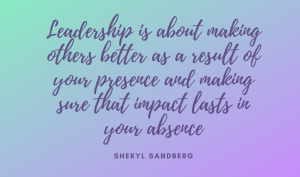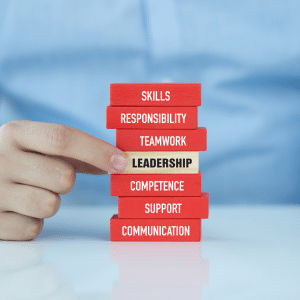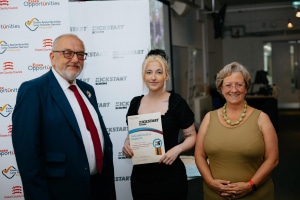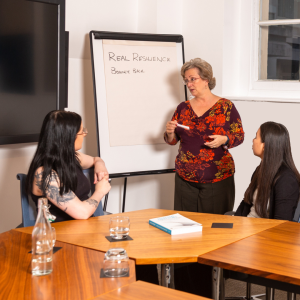there Unraveling the Pitfalls of Implementing Workplace Transformations
Unraveling the Pitfalls of Implementing Workplace Transformations
Transformation and therefore change is an inevitable part of life, and the business world is no exception. In today’s fast-paced service industry, where finance, legal, IT, and other sectors thrive, the ability to adapt and implement change is crucial. As a resilience consultant, I have witnessed both successful and failed attempts at implementing change in the workplace. In this blog, we will delve into the reasons why change initiatives often falter, and explore strategies to overcome these challenges.
The Change Conundrum
Embracing Change: A Leadership Imperative
Effective transformation starts with strong leadership commitment and a clear vision for the desired outcome. Leadership plays a pivotal role in driving and implementing successful change within an organisation.
To effectively manage change, leaders must demonstrate unwavering commitment and dedication to the process. Therefore, they need to communicate a clear and compelling vision that inspires and motivates their teams toward the desired outcome. Without strong leadership, change initiatives can falter and lose direction, leading to resistance, confusion, and ultimately failure.
Leaders must be proactive in fostering a culture that embraces change and encourages innovation. They should provide the necessary resources, support, and guidance to enable their teams to navigate through the complexities of change. By embodying the change they wish to see, leaders create a ripple effect that permeates throughout the organisation, empowering employees to embrace change, adapt, and thrive in an ever-evolving business landscape. Embracing change is not just a choice; it is imperative for leaders who aspire to build resilient and future-ready organisations.
The People Factor: Resistance and Fear
Resistance to change is a natural human response. Recognising and addressing employee concerns and fears is vital. When organisations introduce changes, whether it’s implementing new technologies, restructuring, or adopting new strategies, they often encounter resistance from every level of the organisation. This resistance is a natural human response rooted in our innate need for stability and familiarity. Change disrupts the status quo and can create uncertainty, which triggers fear and resistance.
vital. When organisations introduce changes, whether it’s implementing new technologies, restructuring, or adopting new strategies, they often encounter resistance from every level of the organisation. This resistance is a natural human response rooted in our innate need for stability and familiarity. Change disrupts the status quo and can create uncertainty, which triggers fear and resistance.
To navigate this resistance effectively, it’s crucial for leaders to recognise and acknowledge the concerns and fears. By doing so, they can address these emotions and provide reassurance and support. Open communication channels are essential during times of change, as they allow everyone to express their concerns and receive transparent information about the change process.
Leaders should actively listen to employees’ fears and concerns, demonstrating empathy and understanding. This helps create a sense of psychological safety, where employees feel comfortable voicing their apprehensions without fear of negative consequences. Addressing concerns directly and honestly can alleviate anxieties and build trust among the workforce.
Additionally, providing employees with the necessary resources and training to adapt to the change can help alleviate fear and resistance. Offering workshops, mentoring programs, or access to learning materials can empower employees to develop new skills and feel more confident in embracing the change. Support from leaders and peers can also play a vital role in easing fears and building a positive attitude toward change.
Let Everyone Be Part of the Transformation Process
Engaging employees early on and involving them in the transformation process boosts motivation and ownership. Facilitating discussions and seeking input from others can have a transformative impact when it comes to implementing change. By actively involving individuals in the decision-making process and encouraging their contributions, everyone feels a sense of ownership and belonging. When people are given the opportunity to co-create, their ideas and perspectives are valued, fostering a culture of collaboration and inclusivity.
Engaging in discussions allows for the exchange of diverse viewpoints and insights, leading to more comprehensive and well-rounded solutions. It enables the exploration of different possibilities and encourages innovative thinking. When individuals feel heard and respected, they become more invested in the outcome and are motivated to contribute their best.
Furthermore, facilitating discussions promotes transparency and accountability. It creates an environment where information is shared openly, and decisions are made collectively. This helps to build trust among team members and stakeholders, as they are aware of the rationale behind the choices made and have had the opportunity to provide input.
Involving others in the change process also helps to identify potential challenges and opportunities that may have otherwise been overlooked. People on the ground often possess valuable insights and practical knowledge that can significantly impact the success of a change initiative. By actively seeking their input, organizations can tap into this expertise and increase the chances of a positive outcome.
Ultimately, facilitating discussions and input empowers individuals, fosters a sense of ownership, and promotes a collaborative and inclusive culture. It harnesses the collective intelligence and creativity of a diverse group, resulting in more effective and sustainable change.
 Common Pitfalls and Challenges
Common Pitfalls and Challenges
Inadequate Communication: The Silence Barrier
Inadequate communication is a common pitfall and challenge that organizations face when implementing change. This pitfall is often referred to as the “silence barrier.” When there is a lack of open and transparent communication, it creates a void that is quickly filled with misinformation and speculation among employees.
Without clear communication about the reasons behind the transformation, the desired outcomes, and the steps involved, employees are left to their own devices to fill in the gaps. This can result in rumors, anxiety, and resistance to the proposed changes. Employees may start questioning the motives behind the change, creating a sense of distrust and resistance within the organisation.
Furthermore, inadequate communication can lead to a lack of understanding. When people do not fully comprehend the purpose and benefits of the change, they may not be motivated to embrace it. They might view it as an unnecessary disruption to their established routines and ways of working. This lack of understanding can hinder the adoption and implementation of the change, as employees may not see the value in it.
To overcome the silence barrier, organisations need to prioritise open and transparent communication channels. Leaders should actively communicate the reasons for the change, the intended outcomes, and the steps involved. Ultimately, they should provide opportunities for employees to ask questions, seek clarification, and express their concerns. By fostering an environment of open dialogue, organisations can address misinformation, alleviate fears, and build trust among employees.
Additionally, it is essential to establish consistent and regular communication channels throughout the change process. This could include town hall meetings, team briefings, email updates, or intranet platforms. By keeping employees informed at every stage of the change, organizations can minimize uncertainty and maintain engagement and support.
Insufficient Training and Support: The Skill Gap Dilemma
Providing adequate training and support is critical to enable employees to navigate through the new landscape. One of the primary consequences of insufficient training and support is a decrease in overall organisational efficiency. When employees lack the necessary skills to utilise new technologies or implement innovative strategies, tasks take longer to complete, and errors become more prevalent. This not only hampers productivity but also affects the quality of work delivered, potentially damaging the organisation’s reputation and customer satisfaction.
Moreover, the absence of adequate training and support can also hinder employee growth and development. In a fast-paced business landscape, continuous learning is crucial for professional advancement. When employees are left to figure things out on their own, their growth potential is limited and this lack of development opportunities can lead to demotivation, stagnation, and an increased likelihood of employee turnover.
Strategies for Success
Change Champions: The Power of Influencers
Identifying and empowering change champions within the organization helps drive acceptance and engagement. Change champions play a crucial role in driving acceptance and engagement within an organisation. These individuals are influential figures who embrace and promote change, inspiring others to follow suit. Identifying these change champions and empowering them with the necessary tools and resources enables them to effectively communicate the benefits and importance of the change initiative, thus fostering a positive attitude towards the transformation. Albeit, they are not necessarily the most senior. Change champions should be leaders who are passionate about the change. Willing to help and support the vision and mission when talking to others. They are the cheerleaders of change.
Staged Implementation: Gradual Progress for Lasting Change
Breaking down change initiatives into manageable stages ensures smoother implementation and minimizes disruption. To ensure lasting change, it is essential to implement change initiatives gradually through staged implementation. Breaking down the overall change into smaller, manageable stages not only makes it more feasible for implementation but also reduces disruption. By focusing on one stage at a time, organizations can navigate through the transformation process with greater ease and flexibility, allowing employees to adapt and integrate the changes into their routines more effectively.
Continuous Evaluation and Adaptation: The Evolutionary Approach
Regularly evaluating the change process and making necessary adjustments allows for continuous improvement. Continuous evaluation and adaptation are critical components of a successful change strategy. Organizations should regularly assess the progress and impact of the change initiative and make necessary adjustments as needed. This evolutionary approach allows for ongoing improvement and refinement of the change process, ensuring that it remains aligned with the organization’s goals and objectives. By continuously evaluating and adapting, organizations can address any challenges or barriers that arise, fostering a culture of learning and agility.
Implementing change requires a resilient mindset and a strategic approach. However, by understanding the common pitfalls and challenges that hinder successful change initiatives, managers can proactively address them. Embracing open communication, involving employees, and providing necessary support are key factors in overcoming resistance and ensuring successful change implementation. Therefore, by fostering a culture of adaptability and continuous improvement, managers can navigate the ever-evolving landscape of the service industry and lead their organizations toward growth and success.
 Embracing 4 Values of Leadership
Embracing 4 Values of Leadership

 Holistic Leadership
Holistic Leadership
 In the realm of business, politics, education, and beyond, leadership stands as the cornerstone of progress and success. Good leadership isn’t just about authority or power; it’s about inspiring and empowering others to reach their fullest potential. Let’s delve into the essence of leadership, exploring the qualities and actions that define exemplary leaders.
In the realm of business, politics, education, and beyond, leadership stands as the cornerstone of progress and success. Good leadership isn’t just about authority or power; it’s about inspiring and empowering others to reach their fullest potential. Let’s delve into the essence of leadership, exploring the qualities and actions that define exemplary leaders.
 Perseverance: Be able to make it through challenging times
Perseverance: Be able to make it through challenging times I’m Sophie, and I’m going to share with you some insight into my personal journey as an employee living and working with Attention Deficit Hyperactivity Disorder (ADHD). As any person living with neurodiversity will tell you, it’s never a straightforward or linear journey. It comes with a lot of trial and error, ups and downs, and a lengthy process of finding what works for you. However, having the support of your colleagues and employers will be beneficial to anyone like myself.
I’m Sophie, and I’m going to share with you some insight into my personal journey as an employee living and working with Attention Deficit Hyperactivity Disorder (ADHD). As any person living with neurodiversity will tell you, it’s never a straightforward or linear journey. It comes with a lot of trial and error, ups and downs, and a lengthy process of finding what works for you. However, having the support of your colleagues and employers will be beneficial to anyone like myself.
 Clear communication and expectations have also been essential. My employer takes the time to provide me with detailed instructions and deadlines, ensuring that I know exactly what is expected of me. As someone who struggles following vague instructions, I need as much detail and information as possible. Asking for more clarity and receiving it has been great for my work.
Clear communication and expectations have also been essential. My employer takes the time to provide me with detailed instructions and deadlines, ensuring that I know exactly what is expected of me. As someone who struggles following vague instructions, I need as much detail and information as possible. Asking for more clarity and receiving it has been great for my work. Welcome to our journey of embracing neurodiversity in the workplace. As an employer, I’ve always strived to create an inclusive environment where every employee feels valued and supported. However, it wasn’t until we embarked on this journey that I truly understood the importance of seeing each individual and their unique set of needs that I really fostered an understanding of neurodiversity in our workplace.
Welcome to our journey of embracing neurodiversity in the workplace. As an employer, I’ve always strived to create an inclusive environment where every employee feels valued and supported. However, it wasn’t until we embarked on this journey that I truly understood the importance of seeing each individual and their unique set of needs that I really fostered an understanding of neurodiversity in our workplace.
 Our journey of embracing neurodiversity has been transformative, both personally and professionally. By making adaptations for employees and fostering understanding, we have created a workplace where every individual can thrive. I encourage other employers to embark on their own journey of discovery, because when we embrace diversity, we enrich not only the lives of our employees but also our organisations as a whole.
Our journey of embracing neurodiversity has been transformative, both personally and professionally. By making adaptations for employees and fostering understanding, we have created a workplace where every individual can thrive. I encourage other employers to embark on their own journey of discovery, because when we embrace diversity, we enrich not only the lives of our employees but also our organisations as a whole.


 For health management, it is important to understand the physical responses triggered by the body when subjected to stressors. Notably, the release of hormones, namely adrenaline and cortisol, is a fundamental element of the stress response. This response mobilises energy by increasing blood glucose levels, preparing the individual for a fight-or-flight situation.
For health management, it is important to understand the physical responses triggered by the body when subjected to stressors. Notably, the release of hormones, namely adrenaline and cortisol, is a fundamental element of the stress response. This response mobilises energy by increasing blood glucose levels, preparing the individual for a fight-or-flight situation. digestive processes. Persistent stressors can precipitate gut disorders, including constipation, diarrhoea, and indigestion. Prolonged exposure to chronic stress carries the potential to instigate severe gut conditions, such as irritable bowel syndrome and other related disorders. This underscores the intricate relationship between stress, cortisol, and the multifaceted nature of gut health.
digestive processes. Persistent stressors can precipitate gut disorders, including constipation, diarrhoea, and indigestion. Prolonged exposure to chronic stress carries the potential to instigate severe gut conditions, such as irritable bowel syndrome and other related disorders. This underscores the intricate relationship between stress, cortisol, and the multifaceted nature of gut health. Wellbeing: Whose responsibility is it?
Wellbeing: Whose responsibility is it?
 A Guide to Support and Understanding
A Guide to Support and Understanding
 The Timeless Power of Fables: Teaching Life’s Lessons through Stories
The Timeless Power of Fables: Teaching Life’s Lessons through Stories
 The Resilient Reed: A Fable
The Resilient Reed: A Fable Mental Health at Work – Time for a Different Approach
Mental Health at Work – Time for a Different Approach an open and supportive environment where individuals feel comfortable discussing their mental health challenges without fear of judgment. Encouraging open communication, providing access to mental health resources, and offering flexible work arrangements are effective coping strategies that foster a mentally healthy workplace. this will only happen when mental health is spoken about openly from the top of the organisation down. If I am having a challenging time I share it with those working around me. How can I expect others to share unless I am prepared to go first!
an open and supportive environment where individuals feel comfortable discussing their mental health challenges without fear of judgment. Encouraging open communication, providing access to mental health resources, and offering flexible work arrangements are effective coping strategies that foster a mentally healthy workplace. this will only happen when mental health is spoken about openly from the top of the organisation down. If I am having a challenging time I share it with those working around me. How can I expect others to share unless I am prepared to go first! Employee Happiness:
Employee Happiness: Unraveling the Pitfalls of Implementing Workplace Transformations
Unraveling the Pitfalls of Implementing Workplace Transformations vital. When organisations introduce changes, whether it’s implementing new technologies, restructuring, or adopting new strategies, they often encounter resistance from every level of the organisation. This resistance is a natural human response rooted in our innate need for stability and familiarity. Change disrupts the status quo and can create uncertainty, which triggers fear and resistance.
vital. When organisations introduce changes, whether it’s implementing new technologies, restructuring, or adopting new strategies, they often encounter resistance from every level of the organisation. This resistance is a natural human response rooted in our innate need for stability and familiarity. Change disrupts the status quo and can create uncertainty, which triggers fear and resistance. Common Pitfalls and Challenges
Common Pitfalls and Challenges
 Navigating the Challenges of Implementing Change in the Service Industry: Insights from a Resilience Consultant
Navigating the Challenges of Implementing Change in the Service Industry: Insights from a Resilience Consultant programme into smaller, manageable steps to avoid overwhelming your team. Regularly evaluate progress, celebrate successes, and adjust the plan as needed.
programme into smaller, manageable steps to avoid overwhelming your team. Regularly evaluate progress, celebrate successes, and adjust the plan as needed. Navigating the Challenges: A Coach’s Perspective
Navigating the Challenges: A Coach’s Perspective
 Metrics That Matter
Metrics That Matter Celebrating Diversity
Celebrating Diversity
 trait that can affect people across the introvert-extrovert spectrum. It is important to remember that shyness is not a flaw but rather a personal characteristic.
trait that can affect people across the introvert-extrovert spectrum. It is important to remember that shyness is not a flaw but rather a personal characteristic. How Coaching Can Unlock Your Team’s Potential
How Coaching Can Unlock Your Team’s Potential these challenges as opportunities for growth rather than roadblocks. They stay focused, maintain a positive mindset, and find creative solutions to overcome hurdles, fostering a culture of problem-solving within your team.
these challenges as opportunities for growth rather than roadblocks. They stay focused, maintain a positive mindset, and find creative solutions to overcome hurdles, fostering a culture of problem-solving within your team. Some employees are struggling with being back in the office. Quite a few companies require employees to return to the office full-time or increase the number of days. I have definitely noticed a trend so far in 2023. I know many people who are being urged to amp up their office presence. Typically, the request is for an increase of 3-4 days a week in the office.
Some employees are struggling with being back in the office. Quite a few companies require employees to return to the office full-time or increase the number of days. I have definitely noticed a trend so far in 2023. I know many people who are being urged to amp up their office presence. Typically, the request is for an increase of 3-4 days a week in the office.
 What about Gen Z?
What about Gen Z? Can the four-day week work for your business?
Can the four-day week work for your business? part said that they found it easier to combine work and personal responsibilities, and 62% said it benefitted their social life. Employee resignations dropped by 57%, and the companies themselves saw increased revenue by 35%.
part said that they found it easier to combine work and personal responsibilities, and 62% said it benefitted their social life. Employee resignations dropped by 57%, and the companies themselves saw increased revenue by 35%. A personal perspective
A personal perspective Over the course of six blogs, we are looking at Menopause. Why? Because so many women go through it, without understanding the changes, and how they can manifest. I was diagnosed with burnout back in 2011. I realise, with hindsight, that menopause was a major contributing factor to my symptoms and mental state. Are you in a similar situation? We can have a much better transition if we have a better understanding of menopause. We can learn to work with our bodies and find our personal path.
Over the course of six blogs, we are looking at Menopause. Why? Because so many women go through it, without understanding the changes, and how they can manifest. I was diagnosed with burnout back in 2011. I realise, with hindsight, that menopause was a major contributing factor to my symptoms and mental state. Are you in a similar situation? We can have a much better transition if we have a better understanding of menopause. We can learn to work with our bodies and find our personal path.
 What can you do as an employer to help?
What can you do as an employer to help? Over the course of six blogs, we are looking at Menopause. Why? Because so many women go through it, without understanding the changes, and how they can manifest. I was diagnosed with burnout back in 2011. I realise, with hindsight, that menopause was a major contributing factor to my symptoms and mental state. Are you in a similar situation? We can have a much better transition if we have a better understanding of menopause. We can learn to work with our bodies and find our personal path.
Over the course of six blogs, we are looking at Menopause. Why? Because so many women go through it, without understanding the changes, and how they can manifest. I was diagnosed with burnout back in 2011. I realise, with hindsight, that menopause was a major contributing factor to my symptoms and mental state. Are you in a similar situation? We can have a much better transition if we have a better understanding of menopause. We can learn to work with our bodies and find our personal path. something to dread, they see it as the transition from being a member of society, to becoming a spiritual elder. Mayan women believe that entering menopause gives them their access to shamanic abilities and healing powers. They have ceased to have children and will now focus on taking care of their children’s children and the community. Therefore, becoming a well-respected and useful member of the community. There is a quote that Native American and other Indigenous people say which is “The blood you no longer bleed is retained as wise blood.” Perhaps we could learn something from them and change how we personally view menopause? You can read more about different cultures surrounding menopause
something to dread, they see it as the transition from being a member of society, to becoming a spiritual elder. Mayan women believe that entering menopause gives them their access to shamanic abilities and healing powers. They have ceased to have children and will now focus on taking care of their children’s children and the community. Therefore, becoming a well-respected and useful member of the community. There is a quote that Native American and other Indigenous people say which is “The blood you no longer bleed is retained as wise blood.” Perhaps we could learn something from them and change how we personally view menopause? You can read more about different cultures surrounding menopause  Staying resilient during the holidays can be challenging.
Staying resilient during the holidays can be challenging.
 Do you find yourself doing all the planning for your family? Buying groceries or gifts? Or standing in the kitchen alone amongst piles of dirty dishes? If you’re feeling totally overwhelmed, remember to speak up.
Do you find yourself doing all the planning for your family? Buying groceries or gifts? Or standing in the kitchen alone amongst piles of dirty dishes? If you’re feeling totally overwhelmed, remember to speak up. Well-being is the feeling of being well and being able to take life in your stride. Gallup encapsulated the breakdown of wellbeing in their book “Wellbeing at Work”, breaking it down into 5 key aspects of wellbeing, that I believe, describe the different elements exceptionally well:
Well-being is the feeling of being well and being able to take life in your stride. Gallup encapsulated the breakdown of wellbeing in their book “Wellbeing at Work”, breaking it down into 5 key aspects of wellbeing, that I believe, describe the different elements exceptionally well: When I took up the piano, little did I know the wonderful side effects! It is a great way to improve brain resilience! To keep our brains resilient we need to take care of our brain’s cognitive and emotional health. Keep your brain healthy by stimulating it with activities that challenge it.
When I took up the piano, little did I know the wonderful side effects! It is a great way to improve brain resilience! To keep our brains resilient we need to take care of our brain’s cognitive and emotional health. Keep your brain healthy by stimulating it with activities that challenge it. Whether it’s a new language, history, or science topic, keeping your brain active can help you retain information.
Whether it’s a new language, history, or science topic, keeping your brain active can help you retain information. It is a long-established fact that exercise is good for our bodies but what about brain resilience? The evidence is very clear – leading a physically active lifestyle provides benefits for overall health and wellbeing. Studies have repeatedly shown that people who are physically active throughout their lives have a lower-than-average risk of a decline in thinking skills with aging.
It is a long-established fact that exercise is good for our bodies but what about brain resilience? The evidence is very clear – leading a physically active lifestyle provides benefits for overall health and wellbeing. Studies have repeatedly shown that people who are physically active throughout their lives have a lower-than-average risk of a decline in thinking skills with aging. Classes aren’t just a way to pass the time – they can actually help keep your brain active and sharp. If you’re interested in a new hobby or want to improve your job performance, taking classes is a great way to learn new things and keep your mind fresh. With so many options available, you’re sure to find a class that’s perfect for you.
Classes aren’t just a way to pass the time – they can actually help keep your brain active and sharp. If you’re interested in a new hobby or want to improve your job performance, taking classes is a great way to learn new things and keep your mind fresh. With so many options available, you’re sure to find a class that’s perfect for you. Over the course of six blogs we are looking at Menopause. Why? Because so many women go through it, without understanding the changes, and how they can manifest. I was diagnosed with burnout back in 2011. I realise, with hindsight, that menopause was a major contributing factor to my symptoms and mental state. Are you in a similar situation? We can have a much better transition if we have a better understanding of menopause. We can learn to work with our bodies and find our personal path.
Over the course of six blogs we are looking at Menopause. Why? Because so many women go through it, without understanding the changes, and how they can manifest. I was diagnosed with burnout back in 2011. I realise, with hindsight, that menopause was a major contributing factor to my symptoms and mental state. Are you in a similar situation? We can have a much better transition if we have a better understanding of menopause. We can learn to work with our bodies and find our personal path.
 In Chinese medicine, the general aging of both men and women can be referred to as ‘Kidney Yin Deficiency’. Certain symptoms may also present as a depletion of Kidney essence. According to the Yin/Yang principles, Yin encourages the cooling process and Yang provides the warming function. Both Yin and Yang play a significant part in health, therefore diagnosing and treating signs and symptoms is prevalent in menopause. Stress and aging can cause disharmonies and depletion of our yin which can induce symptoms like insomnia leading up to menopause. Through this important stage of life, both yin and yang need nourishment to maintain a healthy balance of all symptoms during the menopause.
In Chinese medicine, the general aging of both men and women can be referred to as ‘Kidney Yin Deficiency’. Certain symptoms may also present as a depletion of Kidney essence. According to the Yin/Yang principles, Yin encourages the cooling process and Yang provides the warming function. Both Yin and Yang play a significant part in health, therefore diagnosing and treating signs and symptoms is prevalent in menopause. Stress and aging can cause disharmonies and depletion of our yin which can induce symptoms like insomnia leading up to menopause. Through this important stage of life, both yin and yang need nourishment to maintain a healthy balance of all symptoms during the menopause. Over the course of six blogs we are looking at Menopause. Why? Because so many women go through it, without understanding the changes, and how they can manifest. I was diagnosed with burnout back in 2011. I realise, with hindsight, that menopause was a major contributing factor to my symptoms and mental state. Are you in a similar situation? You can have a much better transition if you have a better understanding of menopause. You can learn to work with your body and find our personal path. I wish I knew then what I know now, and I wish I had met Sarah when I first started experiencing symptoms. My experience would have been very different. Your experience, if you are not post menopause already, still can be.
Over the course of six blogs we are looking at Menopause. Why? Because so many women go through it, without understanding the changes, and how they can manifest. I was diagnosed with burnout back in 2011. I realise, with hindsight, that menopause was a major contributing factor to my symptoms and mental state. Are you in a similar situation? You can have a much better transition if you have a better understanding of menopause. You can learn to work with your body and find our personal path. I wish I knew then what I know now, and I wish I had met Sarah when I first started experiencing symptoms. My experience would have been very different. Your experience, if you are not post menopause already, still can be. your ovaries are slowing down the production of progesterone and oestrogen, your adrenal glands (that produce the stress hormones) take over and produce those hormones. Your body is designed for survival, and will always put that first above anything else. This means that while your adrenal glands are producing a lot of stress hormones they can’t produce a sufficient amount of sex hormones.
your ovaries are slowing down the production of progesterone and oestrogen, your adrenal glands (that produce the stress hormones) take over and produce those hormones. Your body is designed for survival, and will always put that first above anything else. This means that while your adrenal glands are producing a lot of stress hormones they can’t produce a sufficient amount of sex hormones.
 What is a curveball?
What is a curveball? If you are looking for stress management techniques to stop stressful events from happening, then sorry, you are in the wrong place! The utility bills will still go up in October and the cost of living will continue to rise. So how do some people manage to take stress in their stride and others cannot? Essentially it is a matter of perception. What I consider to be stressful, you might be absolutely fine with it. And vice versa of course. A lot of the feelings of stress come from feeling out of control like life is happening to us. Feelings of insecurity, lack of options, and feeling overwhelmed are very common.
If you are looking for stress management techniques to stop stressful events from happening, then sorry, you are in the wrong place! The utility bills will still go up in October and the cost of living will continue to rise. So how do some people manage to take stress in their stride and others cannot? Essentially it is a matter of perception. What I consider to be stressful, you might be absolutely fine with it. And vice versa of course. A lot of the feelings of stress come from feeling out of control like life is happening to us. Feelings of insecurity, lack of options, and feeling overwhelmed are very common. and your ability to achieve your goals. It also means maintaining a positive attitude toward the challenges and obstacles you may face along the way.
and your ability to achieve your goals. It also means maintaining a positive attitude toward the challenges and obstacles you may face along the way.